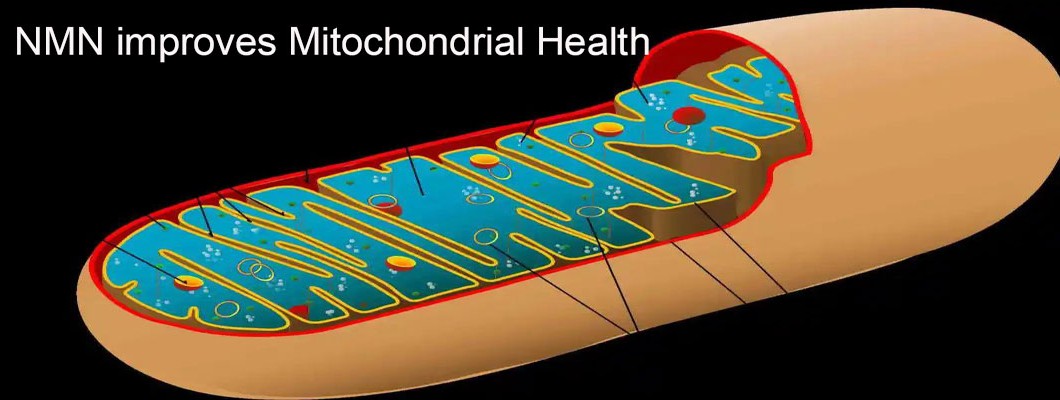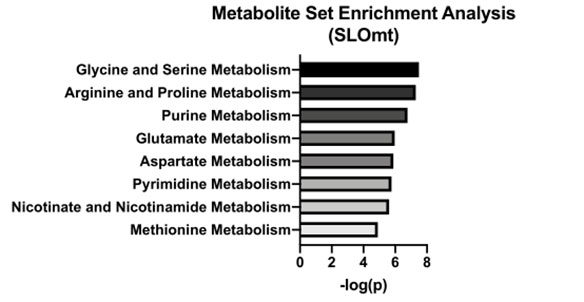
NAD+, I'm sure, is no stranger to you. It is both an important raw material for the DNA repair system and a key liaison factor between the nucleus and the mitochondria.
NAD+ supplementation not only replenishes cells with kinetic energy and improves metabolism, but also induces mitochondrial autophagy and helps maintain normal mitochondrial function.
NMN activates synthesis of nucleotides
Recently, however, scientists from Kyushu University in Japan have demonstrated that NMN can promote the synthesis of nucleotides in the mitochondria, the cell's power-generating structures. As mitochondria have their own DNA, increasing the availability of nucleotides may provide a way to enhance mitochondrial DNA synthesis and replication, which is important for mitochondrial health.
That also suggests that NMN can improve mitochondrial health through a different metabolic pathway than NAD+. This would imply that NMN may be more effective in improving mitochondrial health than other NAD+ precursors.
To increase our understanding of how NMN provides anti-ageing benefits through improved mitochondrial health, the researchers analysed metabolic by-products (metabolites) from human kidney cell mitochondria. HEK293 kidney cells were first treated with 2.5 millimolar concentrations of NMN for 3 days, after which mitochondrial metabolites were measured.
The results show that pathways associated with amino acid, nucleotide and nicotinic acid metabolism are activated both intracellularly and in the mitochondria.

One of the nucleotide synthesis pathways includes both ab initio and remedial synthesis, and in HEK293 kidney cells the ab initio synthesis pathway is usually used.
To determine which type of nucleotide synthesis is activated by NMN, the researchers used the mtDNA inhibitors ddC and ddI to treat the kidney cells. The results showed that the proportion of pyrimidine nucleotides was higher than that of purine nucleotides after NMN supplementation, suggesting that NMN activates the ab initio synthesis of pyrimidine nucleotides.
Changes in renal cell metabolism following NMN treatment
Having figured out the metabolic pathway activated by NMN, the researchers decided to continue following the trail.
One of the enzymes, dihydroorotic acid dehydrogenase (DHODH), located in the inner mitochondrial membrane, uses ubiquinone (also known as coenzyme Q) as an electron acceptor and is responsible for catalysing the fourth step of the pyrimidine nucleotide synthesis pathway, culminating in the oxidation to orotic acid (OA).
The researchers then found that whey acid levels increased after the NMN treatment, and that this was proportional to the concentration. However, they found that the gene expression of DHODH, which is used for catalysis, did not change, suggesting that other molecules must be involved in catalysis.
To further investigate the cause, the researchers labelled the precursors of ubiquinone with stable isotopes and showed that the levels of isotopically labelled ubiquinone increased over time after NMN treatment, suggesting that NMN activates the synthesis of ubiquinone and thus promotes the catalysis of orotate.
In subsequent animal experiments, they continued to administer 500 mg/kg/day of NMN to 14-week-old mice for 5 days and found that NAD+ levels in the heart, liver, spleen and kidney all appeared to be elevated, but not ubiquinone levels.
They then used the same protocol but replaced the 14-week-old mice with 56-week-old aged mice and showed an increase in NAD+ levels in the heart and kidney, but no change in NAD+ levels in the liver. There was also an elevated level of ubiquinone in the mitochondria, suggesting that NMN injection increases ubiquinone in tissues with high mitochondrial demand, such as the heart and kidney, thereby improving mitochondrial health and delaying ageing.
Before we go any further, it is important to know that hundreds to thousands of copies exist within each cell, but during the aging process, the copies are gradually reduced, which in turn affects normal life activities such as oxidative phosphorylation, therefore, regulating the replication of mtDNA is the key to slowing down mitochondrial aging.
The most important characteristic of mitochondrial activity is the amount of mitochondrial DNA (mtDNA).
So does an increase in ubiquinone activate mtDNA replication and enhance mitochondrial activity? The researchers treated HEK293 kidney cells with 4HB and the mitochondrial ubiquinone levels increased, but there was no change in mtDNA copy number in the cells.
Follow-up experiments demonstrated that high levels of ubiquinone must be present in the presence of increased demand for mtDNA replication in order to increase nucleotide synthesis, and also implied that additional pathways existed to activate nucleotide synthesis.
Summary
From the above experimental results, we can conclude that NMN supplementation can boost both ubiquinone and NAD+ levels in the body, but specifically, NMN supplementation can improve mitochondria without relying solely on NAD+, providing more evidence that NMN promotes cellular health.
This also means that NMN may be more effective in delaying ageing than other similar NAD+ precursors.

Leave a Comment